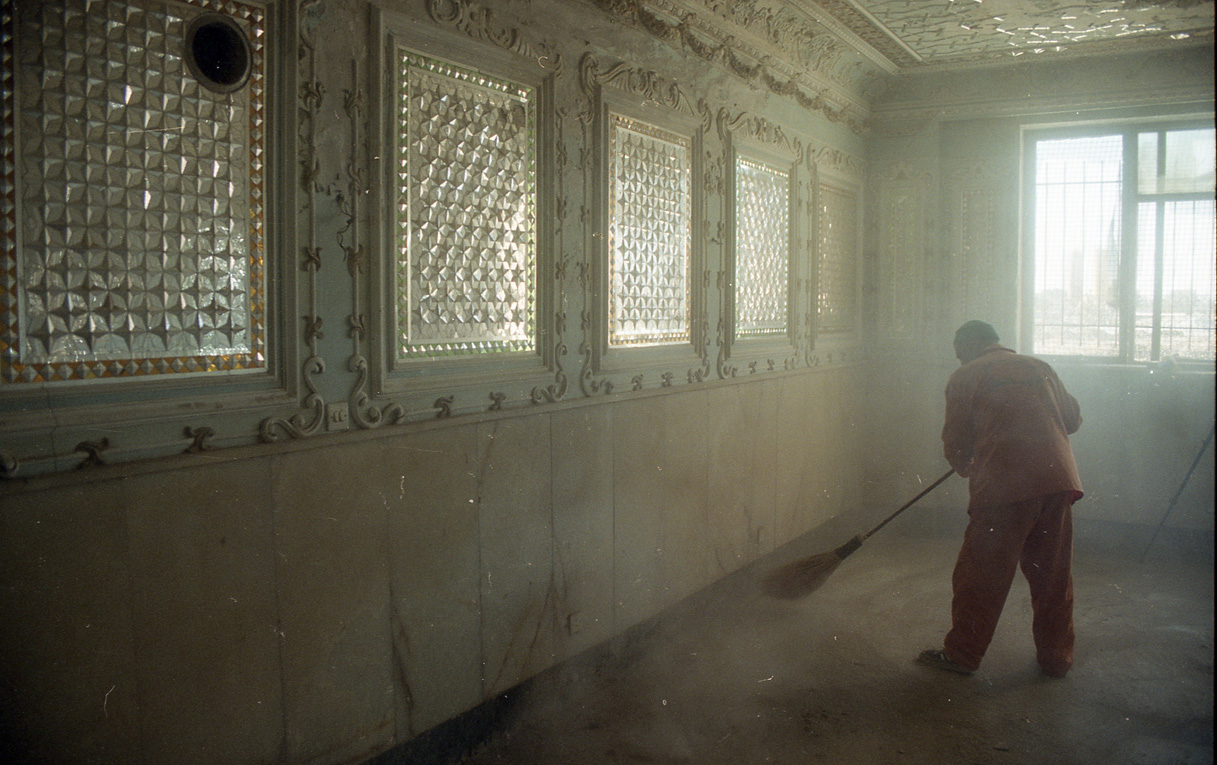Having visited Iran only a handful of times as a child, I returned in 2003 as an adult in need of an understanding of a place. It was necessary for me to visit my aunt Mimish who had been laid to rest in 1975 in my maternal family’s mausoleum in Behesht-e-Zahra. She was killed in a car crash at the tender age of 19.
Recovering the key and a printed map from a clerk at a small gate office, I discovered our mausoleum to be a dilapidated free-standing building, located a few meters past a sacrosanct area of laminated framed teenage boys who had been martyred in death fighting the 1980 Iran Iraq war.
The key opened the rusty padlock. I removed an old chain. Unable to push the door open, it had become obstructed by the rubble of the collapsed ceiling in the interior. The aid of a caretaker’s force, and it yielded, revealing an unexpected dusty, pale turquoise room, with ornate mirror work, crumbling Rococo beadings, broken chandeliers, and smashed windows. A grave untouched for 28 years due to the bleak years of a family in exile following the Islamic revolution.
Remarkably this interior was not overtly Iranian but a display of faded European grandeur. Charming in powder-blue with decorative plaster mouldings and European chairs, you forgot you were visiting a grave in Tehran. My grandmother born in New York and my grandfather born in Kashan, and aged 17 enrolled into Birmingham University, had early in their lives adopted Western values. Included in the design was repetitive cut mirror work, playing with reflections a Persian aesthetic, and a reference to the Zoroastrian belief of worshipping fire and light, the sun revered in pre-Islamic rituals. The rows of dilapidated sofas against the walls I recognised to be an Iranian custom of mourning the dead, where well-wishers sit in silence around the perimeter of a room, a symbol of deep respect. I was mystified. There was detritus in the crypt, but no visible sign of my aunt's presence.
I cleared the room, swept away the glass and rubble and began washing a caked layer of dust off the floor as a final gesture. Carved letters in Arabic slowly began to emerge before me, my aunt’s grave materialising under this hidden layer, preserved and undisturbed. I started discerning other rectangular marble sections until I realised there were twelve black and white compartments, only two of which had been occupied, one by my aunt and one by an unknown relative. I felt an affinity to Mimish whilst performing this cleansing ritual even though she was set in stone, unreachable through material and a bygone age.
The mausoleum was built for the family to remain together for perpetuity; yet forty-five years later, because of the accidents of time, the geographical disperse of family and the consequential historical rupturing of a place, the crypt became a void, violated as its intended role was not realised. My grandfather built the mausoleum for his version of my future; one that he, nor I occupy. Marble spaces never filled.
Postscript: A family scattered.
Members of my family have died a double death, laid to rest in the wrong place; in countries and cities unfamiliar to them with no one they know; their mother nation and adopted surrounds absent. My paternal grandfather, Agha Joon, born in Rasht in Iran, is buried in Sydney; he died in Australia while on holiday visiting his daughter who had emigrated there after the Iranian revolution. My uncle Masoud born in Teheran, emigrated to New York in 1982 after the revolution and died in Florida while on a holiday. He is buried in Los Angeles, California, isolated, away from his children who live in Romania and Zambia. New Zealand has created a new place for my children to carve out a story. Theirs may not include the countries of my parents and mine, that of Iran and Britain.











